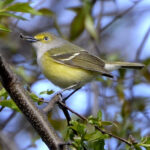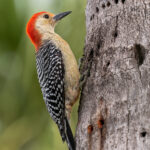Birds N-Z
 |
BROWN-HEADED NUTHATCH (Sitta pusilla)The brown-headed nuthatch occurs in North Carolina throughout the Coastal Plain, essentially throughout the Piedmont, and in a few of the southern mountain counties, at lower elevations. Favored habitats are mature and open longleaf pine stands, such as savannas, flatwoods, and drier sandhills; however, they also are at least locally common in open loblolly, shortleaf, and pond pine stands, less so in Virginia pine. |
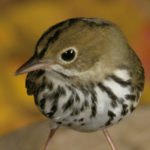 |
OVENBIRD (Seiurus aurocapilla)Ovenbird favored habitats are middle-aged to mature pine-hardwood stands, oak-hickory forests, and drier portions of floodplain forests. It nests in large numbers over nearly all of North Carolina, always in forests with a leafy ground cover; these forests always have a moderate (but not dense) shrub and understory layer, beneath a varied canopy, in many settings. Small numbers winter in the Southeastern states, but the bulk winter in the tropics. |
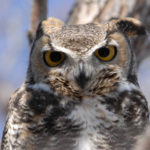 |
OWLSOwls are found across North Carolina. Owls are largely forest birds with most requiring cavities in dead or hollow trees or dense vegetation to seek refuge during the day. Habitat requirements vary among owl species, so it is important to consider the food and cover requirements of each species when developing a habitat management plan. |
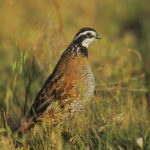 |
NORTHERN BOBWHITE QUAIL (Colinus virginianus)Although it has no official protection designation, Northern bobwhite quail is a species of interest for many natural resource professionals and forest landowners. The loss of suitable habitat has had a crushing impact on Northern bobwhite quail, and populations across North Carolina have declined for many years and remain near all-time lows. This bird is particularly scarce in the piedmont and mountains. |
 |
YELLOW-BELLIED SAPSUCKER (Sphyrapicus varius)The Yellow-bellied Sapsucker is state listed North Carolina Special Concern. During winter this bird is fairly common throughout the state, but it nests only at middle and high elevations in the mountains. In summer, it breeds primarily where there are numerous dead trees, such as in recently burned or diseased areas, but it is mysteriously local in its distribution, being practically absent in some mountain counties. However, it is always associated in summer with mature and open stands of hardwoods, and never in dense forests. |
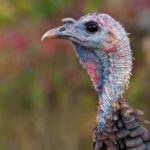 |
EASTERN WILD TURKEY (Meleagris gallopavo)The Eastern Wild Turkey is now found in all 100 North Carolina counties from the mountains to the coast, as well as 49 of the other 50 states, Mexico and Canada. It thrives best in areas with a mix of forested and open land habitats. Forested areas are used for cover, foraging, and for roosting in trees at night. Open land areas are used for foraging, mating, and brood rearing. |
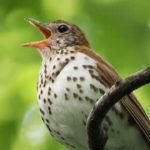 |
WOOD THRUSH (Hylocichla mustelina)The Wood Thrush breeds and nests in all 100 counties of North Carolina but its numbers are declining across its range. Their breeding habitat is typically hardwood canopy and must contain a moderate scatter of saplings or small trees, shrubs, and a rich herb layer. Wood Thrushes are more numerous in damp forests and near streams than in drier woods but will also nest in suburban areas where there are enough large trees. After migration, they winter in understory of lowland tropical forest. |
|
|
WHITE-EYED VIREO (Vireo griseus)Though it can be somewhat hard to see, the white-eyed vireo is common over much or most of North Carolina, but much less so in the mountains. Habitats include thickets around a lake or pond shore, openings such as road margins through a bottomland or swamp, and regenerating clearcuts. In winter, it favors dense evergreen cover, so there is some change of habitat from the summer season. At all times, it is usually found in the shade of dense cover, seldom more than 25 feet from the ground. It is our only breeding species of vireo that favors shrub and understory layers. |
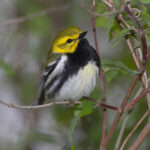 |
BLACK THROATED GREEN WARBLER (Setophaga virens)In North Carolina the black throated green warbler is a summer resident in the mountains region and is considered common. A separate subspecies called “Wayne’s Warbler” nests in cypress swamps of the lower coastal plain. The Wayne’s warbler is listed by NC Wildlife Resources Commission as State Endangered. Getting a good look at this bird is often difficult because they usually remain high in the canopy, but it can be tracked down by its song that birders describe as “trees trees I love trees.” |
 |
CERULEAN WARBLER (Dendroica cerulea)The Cerulean Warbler is state listed North Carolina Special Concern. It is one of the more strongly declining songbirds in the eastern part of the United States. It was petitioned to list as Federally Threatened about a decade ago, but the petition failed, as the U.S. Fish and Wildlife Service felt that the species was still too numerous to list. In North Carolina, nesting occurs mainly in the mountains, and along the Roanoke River. |
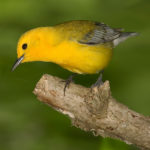 |
PROTHONOTARY WARBLER (Protonotaria citrea)In North Carolina, the Prothonotary Warbler is a common bird of Coastal Plain swamps, but is much less numerous farther inland, and is apparently absent in the mountains as a breeder. It inhabits swamps, bottomlands, nonriverine forests, wooded beaver ponds, and other wet habitats with some dead trees and stubs for nesting (in existing) cavities. Audubon has identified the Prothonotary Warbler as one of 32 priority-bird species within the Atlantic Flyway. However because its habitat actually appears to be increasing in the East, owing to an increase in beavers and beaver ponds, the Prothonotary Warbler appears to be slightly increasing, as well. |
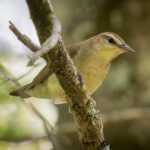 |
SWAINSON’S WARBLER (Limnothlypis swainsonii)Swainson’s warblers breed in southeastern forests with well-developed understory, especially bottomland hardwood forests and moist mountain ravines, but also in young pine plantations in some areas. In North Carolina it is a summer resident and breeds throughout most of the coastal plains and mountains. It is also considered a summer resident in the Piedmont but scarce. This bird tends to remain hidden in the forest understory and the best way to find it is to listen for its bold song. |
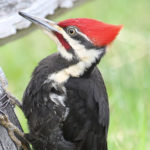 |
PILEATED WOODPECKER (Dryocopus pileatus)In North Carolina, this bird is strictly non-migratory and is found year-round in mature hardwood or mixed forests, preferably in bottomlands/swamps. Pileated Woodpeckers forage in large, dead wood—standing dead trees, stumps, or logs lying on the forest floor. They make impressive rectangular excavations that can be a foot or more long and go deep inside the wood. These holes pursue the tunnels of carpenter ants, the woodpecker’s primary food. |
|
|
RED BELLIED WOODPECKER (Melanerpes carolinus)Red-bellied woodpeckers are common throughout the coastal plain and piedmont regions of the state and fairly common all year at lower elevations of the mountain region, up to about 3,000 feet. These birds mainly search out arthropods on tree trunks. They may also catch insects in flight. Their breeding habitat is usually deciduous forest, and they nest in the decayed cavities of dead trees, old stumps, or in live trees that have softer wood such as elms, maples, or willows. |
 |
RED-COCKADED WOODPECKER (Picoides borealis)The Red-cockaded woodpecker was listed as “endangered” in 1970 and is now one of only two woodpecker species protected by the Endangered Species Act. Because it prefers mature longleaf pine, North Carolina’s population has decreased dramatically with the loss of the state’s longleaf pine forests. Today its presence is limited to extensive managed areas with longleaf pine stands.
|
 |
RED-HEADED WOODPECKER (Melanerpes erythrocephalus)The Red-cockaded woodpecker is a year-round resident of North Carolina that prefers open forests with clear understories, particularly areas with dead and dying trees. They forage for insects, fruit and seeds on the ground and up to 30 feet above ground during the summer, and even higher during winter months.
|

